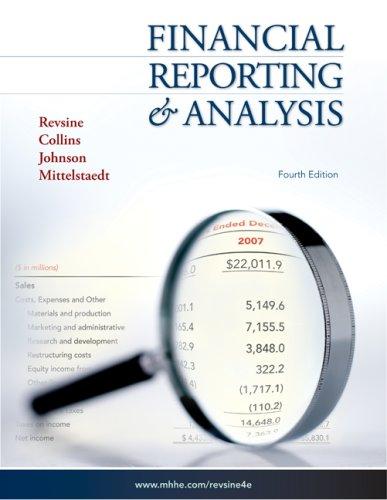The following excerpts were taken from a recent annual report of Quaker Oats Company: [Several years ago]
Question:
The following excerpts were taken from a recent annual report of Quaker Oats Company:
[Several years ago] the Company swapped \($15.0\) million of long-term debt for 27.9 million in deutsche mark (DM) denominated long-term debt, effectively hedging part of the German net investment. ... Due to the sale of the European pet food business last year, the net investment in Germany was reduced to the point where the DM swap was no longer effective as a net investment hedge, requiring any subsequent revaluation adjustments to be charged or credited to the consolidated income statement. To offset this charge or credit, the Company entered into a foreign exchange forward contract and the net effect on the consolidated income statements . .. was not material. . . .
The Company uses commodity options and futures contracts to reduce its exposure to commodity price changes. The Company regularly hedges purchases of oats, corn, corn sweetener, wheat, coffee beans, and orange juice concentrate. Of the \($2.81\) billion in cost of goods sold, approximately \($275\) million to \($325\) million is in commodities that may be hedged. The Company’s strategy is typically to hedge certain production requirements for various periods up to 12 months. As of December 31, . . . approximately 32% ... of hedge able production requirements for the next 12 months were hedged. .. .
Interest Rate Hedges _ The Company actively monitors its interest rate exposure. Last year the Company entered into interest rate swap agreements with a notional value of \($150.0\) million. The swap agreements were used to hedge fixed interest rate risk related to anticipated issuance of long-term debt. The swap agreements were subsequently terminated at a cost of \($11.9\) million as long-term debt was issued. Included in the consolidated balance sheets as of December 31, [Years 1 and 2] were \($8.9\) million and \($10.8\) million, respectively, of prepaid interest expense as settlement of all the interest rate swap agreements. . . . [Two years ago] the Company entered into interest rate cap agreements with a notional value of \($600.0\) million to hedge floating interest rate risk... .
Required:
1. What did Quaker accomplish by swapping \($15.0\) million of its long-term debt for 27.9 million in deutsche mark (DM)-denominated long-term debt?
2. Why was the DM swap “no longer effective” after Quaker sold its European pet food business?
3. What is a foreign exchange forward contract, and how can it be used to hedge a company’s foreign currency exposure?
4, What are commodity options and futures contracts, and how do they reduce Quaker’s exposure to commodity price changes?
5. What is an interest rate swap, and how can it reduce a company's exposure to interest rate risk?
6. What is an interest rate cap, and how is it used to reduce a company's exposure to interest rate changes?
Step by Step Answer:






